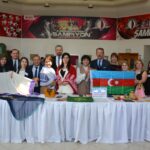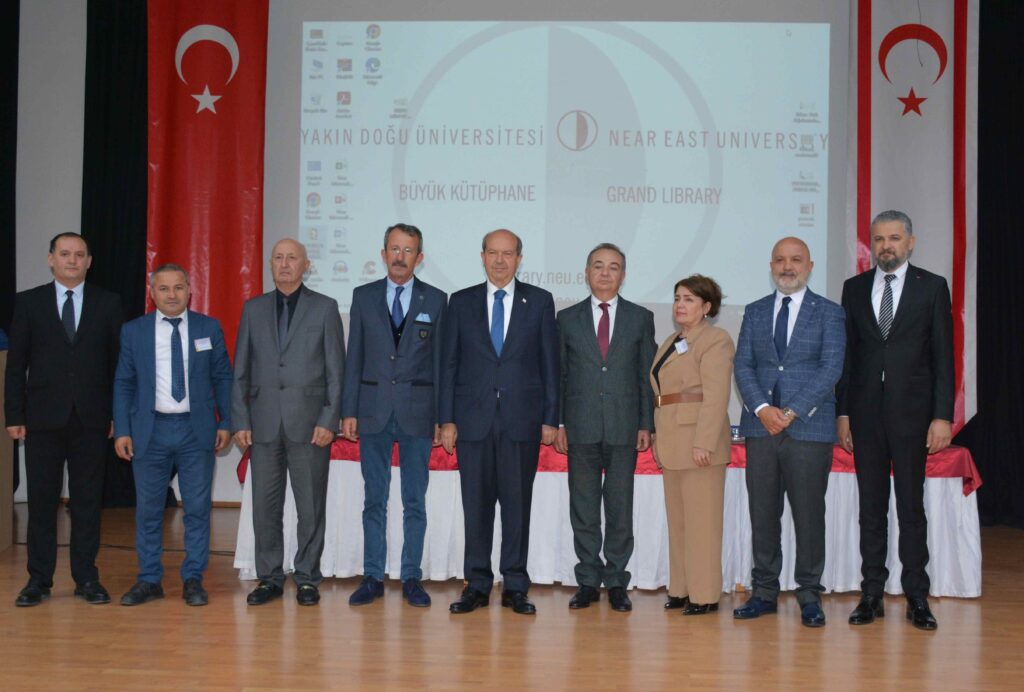
The “19th International Symposium on the Protection of Turkish Culture, Art and Cultural Heritage” organized in honor of Azerbaijani archaeologist and cultural heritage researcher Prof. Dr. Qafar Jebiyev was held at the Grand Library of Near East University.
The 19th “International Symposium on the Protection of Turkish Culture, Art and Cultural Heritage”, an important platform for the protection of Turkish culture, art and cultural heritage, was hosted by Near East University. The symposium, organized in honor of the 75th birth anniversary of Azerbaijani archaeologist and cultural heritage researcher Prof. Dr. Qafar Jebiyev, known for his original works in the field of archaeology and epigraphy of the Turkic world, brought together scientists, artists, academics and cultural heritage experts from the Turkic world and the rest of the world.
The symposium was held with a wide cooperation network. The collaboration network included leading academic and cultural institutions such as Near East University, Aydın Adnan Menderes University Turkish Art and Culture Application and Research Center, Azerbaijan National Academy of Sciences Institute of Architecture and Fine Arts, Selçuk University Turkish Handicrafts Research and Application Center Presidency.
Representatives from over 10 countries attended
The first day of the symposium, which saw intense participation, featured academics, artists and researchers from many countries such as Turkey and the TRNC, as well as Azerbaijan, Uzbekistan, Gagauzia, Moldova, Romania, Iran, Indonesia and the United States. The topics covered in the symposium, which aims to contribute to the development of cultural and artistic collaborations in the Turkish cultural geography, were art and traditional arts, history, literature, music, culture, art history, archaeology, cultural heritage, restoration-conservation, anthropology, folklore, ethnology, geography, tourism and educational sciences.
The opening speeches of the symposium were made by President Ersin Tatar, Near East University Rector Prof. Dr. Tamer Şanlıdağ, Prof. Dr. Qafar Jebiyev, Assoc. Prof. Dr. Hülya Şanes Doğru, Prof. Dr. Artegin Salamzade, Assoc. Prof. Dr. Ahmet Aytaç and Dr. Fariz Halilli.
At the end of the symposium, the “International Plastic Arts Exhibition” met with art lovers. The exhibition, curated by Assoc. Prof. Dr. Ahmet Aytaç, featured works by nearly 30 artists from Turkey, Azerbaijan, Northern Cyprus, Romania, Kosovo, Indonesia and the USA. A total of 13 sessions and nearly 100 papers were presented during the two-day symposium.
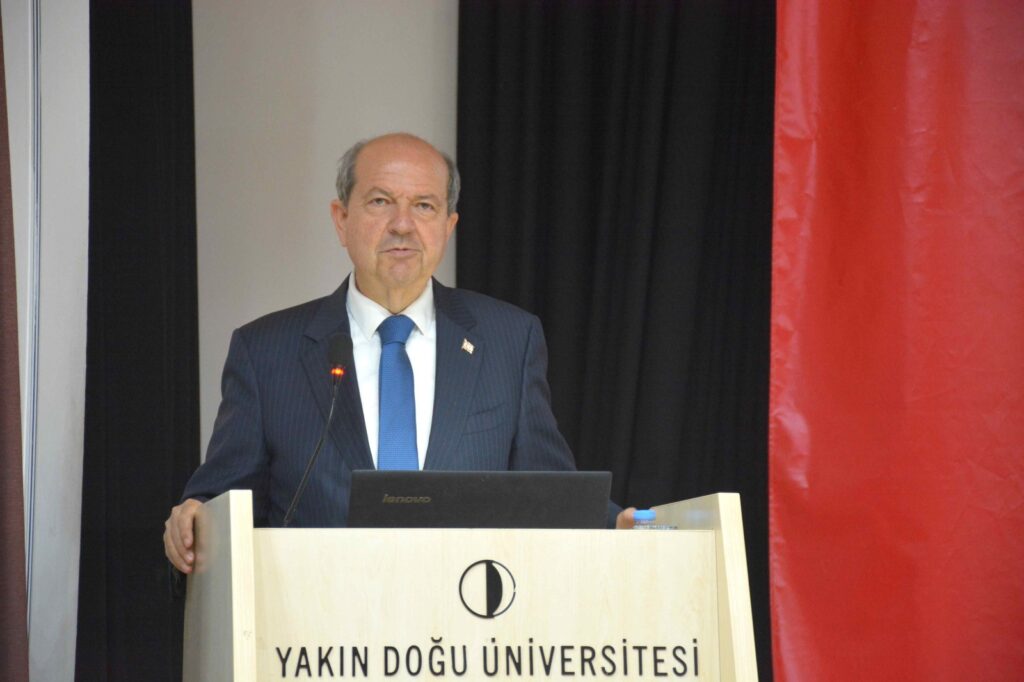
President Ersin Tatar: “We will all work together for a stronger, happier Turkish world.”
President Ersin Tatar began his speech by thanking those who contributed to the organization of the symposium and emphasized the importance of the precious contributions to be made by scientists. President Ersin Tatar, who stated that he attended the symposium to embrace guests from the Turkic World and address students, expressed his happiness at the invitation.
President Ersin Tatar, who emphasized the solidarity that exists in the Organization of Turkic States, stated that they continue with this awareness and touched on the importance and necessity of increasing cooperation and contacts in the communication age we are in. President Ersin Tatar, who emphasized that the Turkic World has a culture and history of 5 thousand years, stated that the Turkic States are progressing in solidarity and continuing in cooperation with institutions and organizations.
President Ersin Tatar said, “After some struggles, we will be even stronger in the future with our cultural infrastructure that connects us to each other with our own language, religion, culture, art, literature and music in Central Asia. We will take stronger steps towards the future with this great wealth.” President Tatar, who also touched on the situation of synchronizing the language and ensuring the unity of the alphabet, emphasized that cooperation will continue to increase in the Turkic World thanks to this. Expressing his belief that stronger ties will be established in trade, cooperation, cultural and economic areas, President Tatar noted that work is ongoing in this context and expressed his wish for the ties to become even stronger.
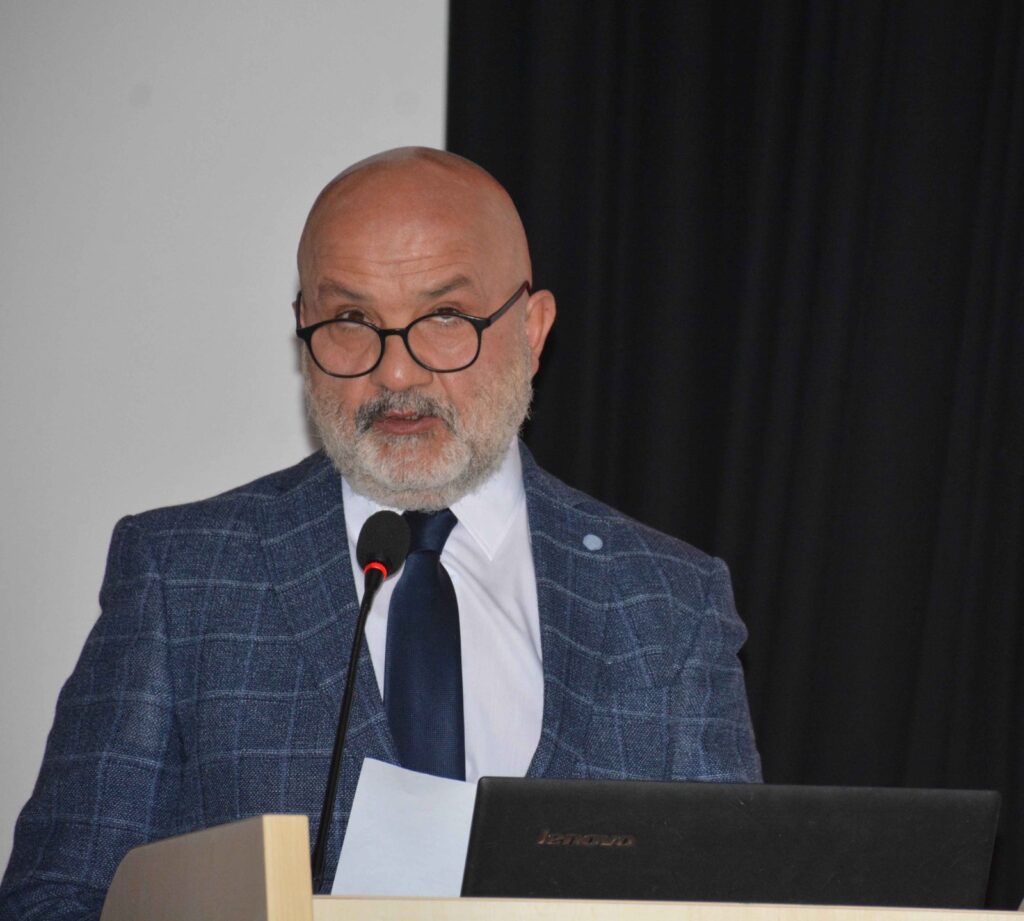
Prof. Dr. Tamer Şanlıdağ: “Together, we will shape the cultural heritage of tomorrow by carrying the traces of the past to the present.”
Sharing their happiness in hosting this important symposium, Near East University Rector Prof. Dr. Tamer Şanlıdağ stated that Cyprus has hosted 19 civilizations throughout history and its culture has been shaped by its rich heritage diversity. Prof. Dr. Tamer Şanlıdağ, who stated that “Near East University, which is the locomotive of higher education in the Turkish Republic of Northern Cyprus, continues to make significant contributions in the fields of science, education, culture and art by rising on this historical heritage. Today, Near East University has an international university identity with its 21 faculties and more than 20 thousand students from 143 countries.”
Referring to the international achievements of Near East University, Prof. Dr. Tamer Şanlıdağ emphasized that the university is ranked 6th in the world in terms of education quality in Times Higher Education’s 2024 World University Impact Rankings and 8th in the ‘Sustainable Cities and Societies’ category. Stating that they also play a pioneering role in the field of culture and arts, Prof. Dr. Tamer Şanlıdağ drew attention to the fact that the Cyprus Museum of Modern Art located on the campus hosts the works of 3 thousand artists from 14 Turkic communities, and that the Cyprus Car Museum sheds light on automotive history. He also stated that the Herbarium and Natural History Museum and the Walled City Museum are important centers that keep the cultural heritage of Cyprus alive.
“I have full faith that with this symposium, we will take important steps towards the protection of our cultural heritage with its scientific and cultural outputs and that we will convey the power of Turkish culture to a wider audience.” said Prof. Dr. Tamer Şanlıdağ, adding “Together, we will shape the cultural heritage of tomorrow by carrying the traces of the past to the present.”
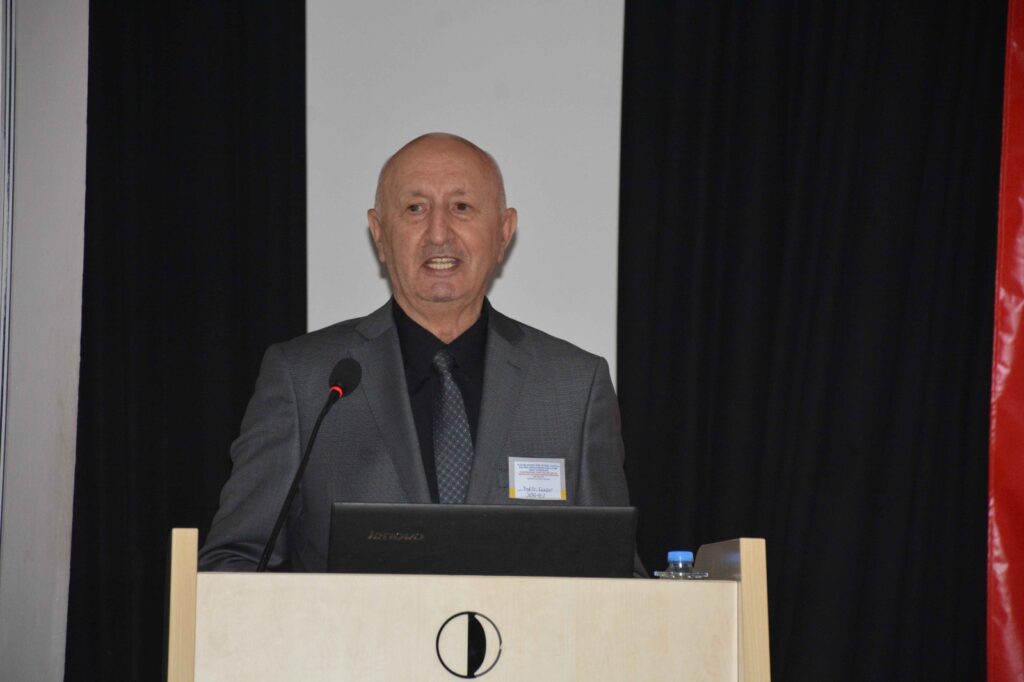
Prof. Dr. Qafar Jebiyev: “This symposium will remind us of the past while also shedding light on the future.”
Prof. Dr. Qafar Jebiyev from the Azerbaijan National Academy of Sciences, in whose honor the symposium was held, began his speech by emphasizing that the TRNC is a second homeland for the Azerbaijani people. Prof. Dr. Jebiyev said, “We feel at home here, not in a foreign country. This symposium will bring us closer by shedding light on the depths of our common history, culture and civilization.”
Prof. Dr. Qafar Jebiyev reminded that he is an archaeologist and said, “We archaeologists focus on culture and history with a deeper perspective; we uncover our identity and roots by following the traces of the past. Because we believe that the future cannot be built without understanding the past. This symposium will also help us understand the Turkish thought, existence, civilization and geography more deeply. Remember that the future belongs to you, the young people. As the heirs of our deep-rooted past, you are the generations that will carry our unity and culture further.”
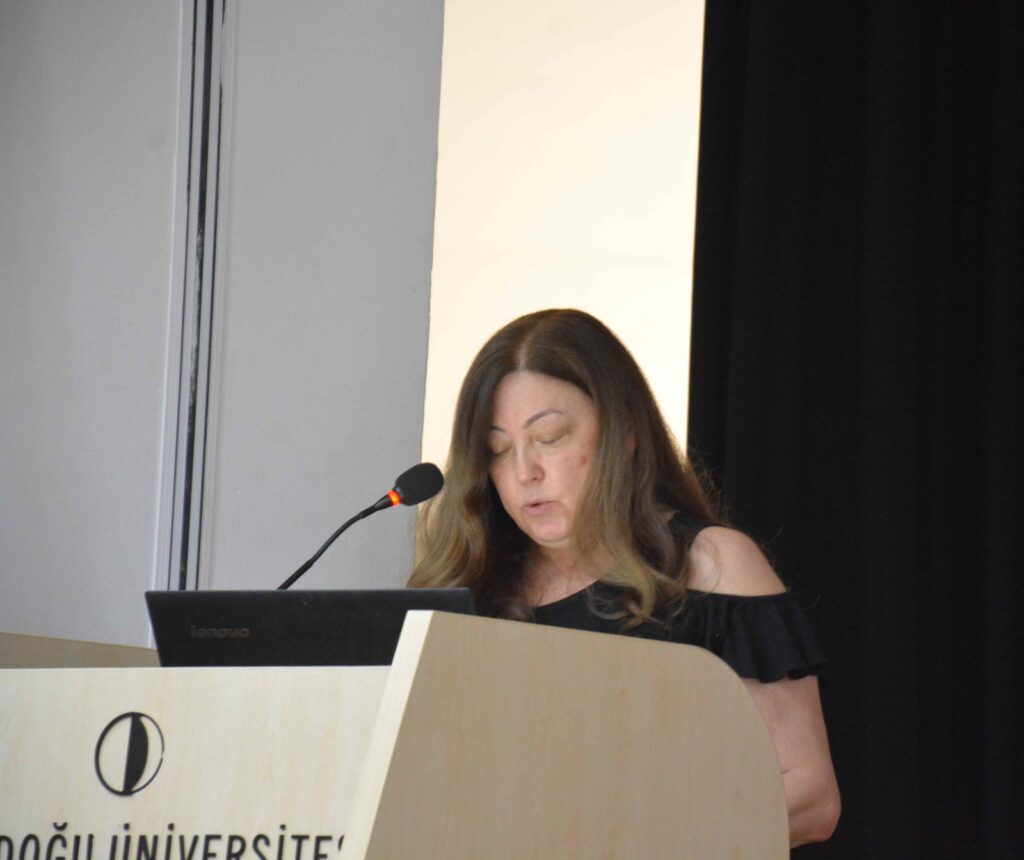
Assoc. Prof. Dr. Hülya Şanes Doğru: “Cultural heritage is like a treasure that can be passed down from generation to generation as tangible and intangible, movable and immovable values.”
Speaking on behalf of the academics attending the symposium from Turkey, Assoc. Prof. Dr. Hülya Şanes Doğru stated that Turkish culture has become one of the richest cultures in human history by interacting with different civilizations throughout history. Assoc. Prof. Dr. Hülya Şanes Doğru said, “This culture has been shaped by traditional Turkish arts and artistic styles. Traditional arts not only form the identity of societies, but also protect the cultural heritage and allow it to be passed on to future generations. Traditions, artistic works and historical structures that have survived from the past to the present are among the important elements that make up this heritage. Cultural heritage is like a treasure that can be passed on from generation to generation as tangible and intangible, movable and immovable values. With the papers presented at the symposium on Turkish culture, art and cultural heritage, we will continue to carry this heritage into the future and contribute to the creation of new resources.”

Dr. Fariz Halilli: “While we have the opportunity to observe our experiences on the protection of the cultural heritage of Northern Cyprus on site, we also share a wide range of information.”
Stating that he had come to the TRNC in the past and contributed to the research of cultural heritage by conducting studies in the field of underwater archaeology, Dr. Fariz Halilli said, “Now, we are participating in the symposium organized for the 75th birth anniversary of the esteemed cultural heritage researcher Prof. Dr. Qafar Jebiyev, together with a large scientific delegation from Azerbaijan. With this symposium, we have the opportunity to observe our experiences in the protection of the cultural heritage of Northern Cyprus, and at the same time, we are sharing a wide range of information.” Stating that such events are extremely important in terms of protecting the cultural heritage and establishing a wider cooperation network, Fariz Halilli said, “I believe that we will take important steps to further strengthen the cultural heritage cooperation between the Republic of Azerbaijan and the Turkish Republic of Northern Cyprus.”


